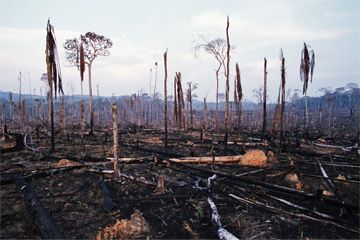It's a concept most children learn in science class: Photosynthesis can convert solar energy to chemical energy. It's the energy production and fuelling process that allows plants and even algae to survive and grow. But, before we get in to why photosynthesis is important, it's time to break down the particulars of this essential biological process.
What is Photosynthesis?
Advertisement
Photosynthesis is a vital process through which green plants, algae, and certain bacteria convert light energy, typically from the sun, into chemical energy in the form of glucose or sugar. This process occurs in specialized structures called chloroplasts, located within the cells of these living organisms [source: National Geographic].
To understand photosynthesis, let's break down the word itself. "Photo-" comes from the Greek word for light, and "-synthesis" means putting together. In essence, photosynthesis is "putting together with light."
Here's a basic breakdown of the process:
- Absorption of light: The chlorophyll, a green pigment present in the chloroplasts, absorbs light energy.
- Conversion and storage of energy: This absorbed light energy is then used to convert carbon dioxide (CO2) from the atmosphere and water (H2O) from the soil into glucose (C6H12O6). Oxygen (O2) is released as a by-product.
- Usage and storage: The produced glucose is either used by the plant for energy, stored as starch, or used to build other organic compounds like cellulose.
While it may seem like a simple exchange, photosynthesis is a complex series of reactions that can be split into two main stages:
- Light dependent reactions: A light dependent reaction takes place in the thylakoid membranes of the chloroplasts and produce ATP (adenosine triphosphate) and NADPH (nicotinamide adenine dinucleotide phosphate) by utilizing light energy. Oxygen is released in this stage.
- Light independent reactions (Calvin Cycle): These reactions occur in the stroma of the chloroplasts. The ATP and NADPH produced in the previous stage are used here to convert CO2 into glucose.
Photosynthesis is the foundation of life on Earth. Not only does it provide food for plants themselves, but it also sustains the animals and humans that feed on those plants.
Moreover, photosynthesis releases oxygen, which is essential for the respiration of most life forms. As a bridge between the sun's energy and life on Earth, photosynthesis ensures the continuation of life as we know it.
Advertisement


